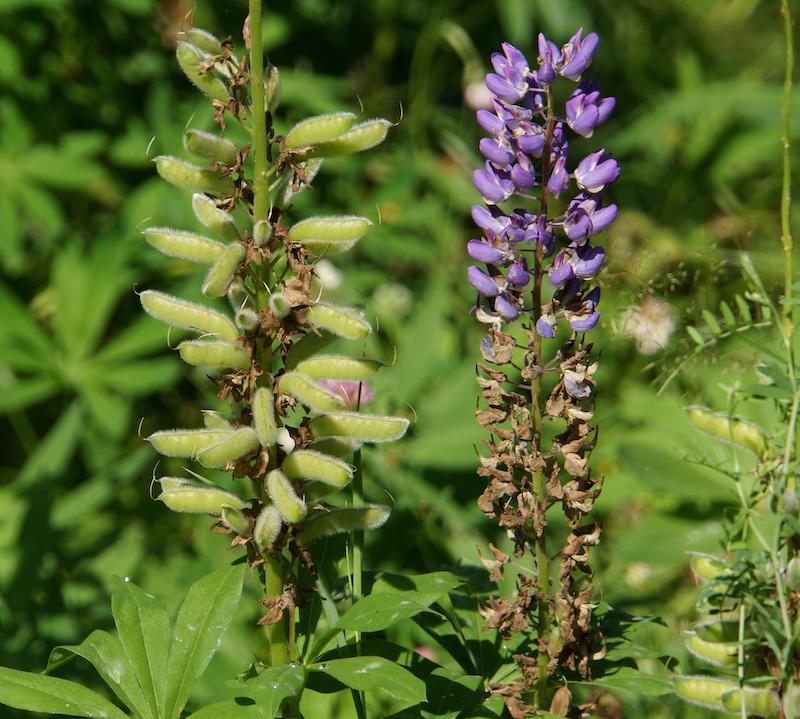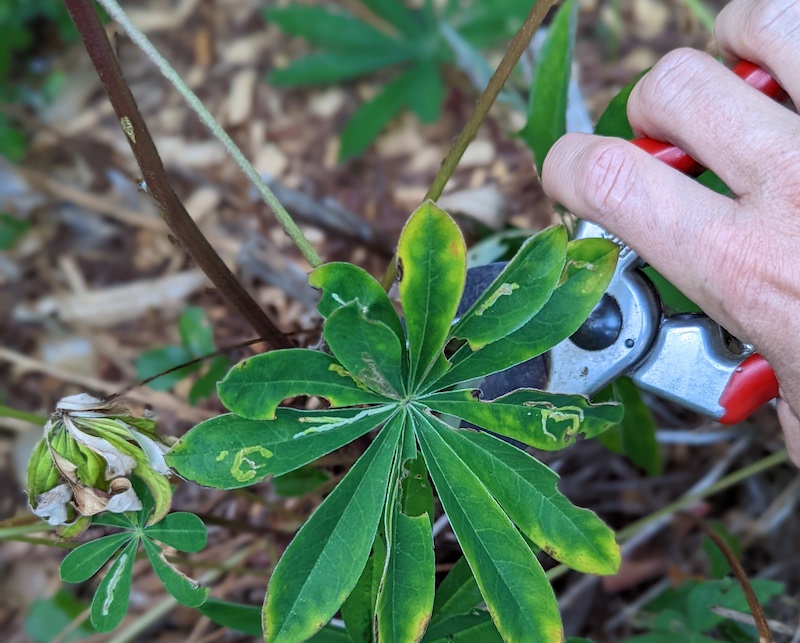Herbaceous perennials like Lupine do not need regular pruning the same way as a tree or shrub. They are more forgiving if the foliage is left to die back naturally or the plant is poorly pruned. During the growing season, any foliage and branches that are dead, dying, or diseased can be easily cut out. Lupine will benefit from regular deadheading of spent flowers and a seasonal cutting back of all of its top growth.

When to Prune Lupine
Lupine needs deadheading during its natural blooming cycle, late in spring and early summer. Cutting any spent flower stems back to a set of leaves will help keep the Lupine's overall shape compact and encourage more flower stem production. Prune back the top growth hard in the fall after the foliage has turned brown in preparation for dormancy and winter. Damaged or diseased stems and foliage need to be removed as soon as possible to prevent spreading of diseases and pests.
Another way to encourage more blooms without constant attention to deadheading is to do a hard cutting back of the plant early in the summer. After the first flush of blooms has faded, cut the whole plant back by half and keep it well watered; thick foliage growth and a second flush of flowers will appear within a few weeks.
Why Prune Lupine
Pruning Lupine helps to improve air circulation if the plant grows an excess of foliage. Thin out stems by cutting them at the base to open up the structure of Lupine and protect it from attacks from aphids, slugs, or snails. Lupine grown in containers will need regular cleaning of spent flower spikes, damaged foliage, and overgrown foliage.

How to Prune Lupine
Step 1 - Deadheading spent flower spikes
Regular deadheading will prolong the bloom period. Cut the flower stem back as close to the ground as possible. Doing this keeps the overall shape of the Lupine compact and encourages new flower shoots to form.
Step 2 - Cutting back damaged branches or foliage
Regular cleaning up of damaged material will help to control the spread of diseases and pests. Cut the stem back to healthy growth or all the way to the ground and dispose of it in the trash or burn it. Diseased plant material should not be put into a home compost system. They do not get hot enough to kill off pathogens reliably.
Step 3 - Cutting back the whole plant after the first flush of flowers
Cut the entire Lupine plant by half its size after the first flush of flowers is finished in early summer. This will allow the plant to regrow completely and produce a new round of blooms later in the summer.
Step 4 - Seasonal cut-back of the spent top growth in fall
Cut back all the foliage as it turns brown in the fall. Cut back growth to within 1-2 inches of the soil, so that the growth crown is not disturbed.
Step 5 - Thinning of excess foliage during the growing season
Cut out thick foliage that does not allow for proper air circulation in Lupines. Poor air circulation can encourage pests like aphids and diseases such as powdery mildew.
Lupine Pruning Tips
- Deadhead regularly to encourage more flower production
- A hard cutback can be done after the first flush of flowers to promote a second show later in the summer
- Cut out any diseased or damaged growth anytime during the season to prevent the spread of pests and diseases
- Thinning of excess foliage may be needed to encourage good air circulation
- Cutting back all of the fading top growth in the fall helps the plant prepare for winter dormancy
 |
Author Robbin Small - Published 8-24-2022 |
